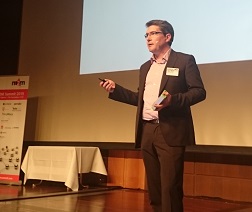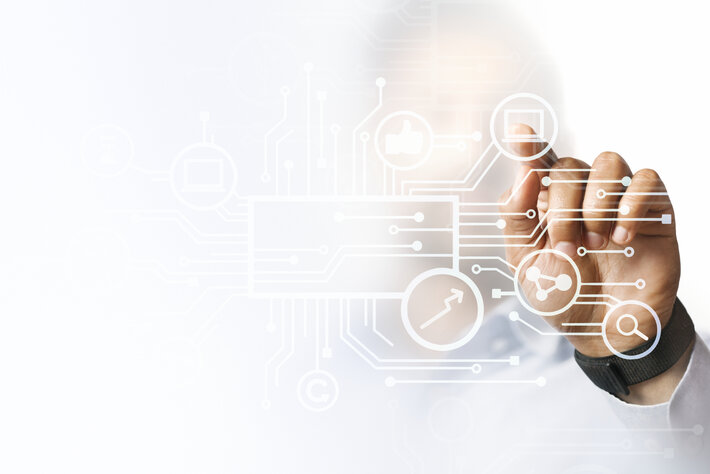Düsseldorf, Germany. Day 1 Review — A striking difference between last year’s event and Day One of the M2M Summit 2015 (September 8-9, 2015), organised by the M2M Alliance, was the way connectivity had slipped down the agenda. It’s no longer the challenge.
#M2MSummit15, Düsseldorf, Germany:
In 2014, writes Jeremy Cowan, M2M connections and their success (or otherwise) underpinned many of the presentations, even if other matters were sometimes of more concern to exhibitors and visitors.
Trying to coalesce the thoughts of a dozen speakers over nine hours on the first day, I’d bring it down to one word, ‘enablement’. It seemed to be a common focal point. Platforms enabling applications, platforms enabling data management, and platforms enabling transmission and control of M2M services. The last of these was referenced in his keynote address by Dr Alexander Lautz of Deutsche Telekom in light of the operator’s new Application Enablement Platform.
As the M2M industry (or more accurately, group of industries) continues to progress, I’d make a small wager that a key topic for 2016 will be better data analysis and integration.
The issues under most frequent discussion were applications such as automotive (notably by Qualcomm), fleet management & logistics, and industrial automation. These dominated numerous discussions, although issues around connectivity – including ‘sunsetting’ 2G and 3G, utilising new Low Power Wider Area Networks (LPWAN), and short range connections such as WiFi, Bluetooth and ZigBee – were never far away.
Even Germany’s incumbent operator, Deutsche Telekom is now talking about multiple technologies used with multiple partners. And they say, “You can’t do it all,” which on its own is a departure from recent years. There is a change occurring in the market when a cellular and fixed line carrier starts to discuss the need for a variety of different technologies to enable M2M and IoT services.
A welcome surprise

One striking factor about Day One was the standout performance by Matthias Machnig, the State Secretary at Germany’s Federal Ministry for Economic Affairs & Energy. He spoke with conviction on the need for Germany, and indeed Europe, to digitalise small and medium-sized enterprises (SMEs) if the German and European economies are to compete. Machnig quoted research published by Handelsblatt (a leading German language business newspaper published in Düsseldorf), stating that 70% of German SMEs admit digitising their business is not at the top of their agenda. If this is the case it will make it hard for them and their customers to benefit fully from the Industrial Internet of Things (IIoT – also known as Industry 4.0).
The State Secretary then took part in a panel discussion with another first class speaker, Professor Dr Axel Sikora of Offenburg University of Applied Sciences, and with your correspondent. In the coffee break afterwards there was wide agreement that Machnig had performed impressively, joining an industry forum not just as a remote speaker but one prepared to debate his viewpoint (in fluent English) and to listen to other views. I have interviewed politicians around the world and I couldn’t imagine many of them being able and willing to do the same.
In the US, says Machnig, the platform is the basis of application development, whereas in Europe he maintains it starts with the product. He also talked about the need for German standards, which certainly upset a subsequent speaker, Stefan Hoppe of OPC, because as Prof Sikora showed later, ongoing standards work is not German; it is European or global and fast evolving.
Future-proofing the IoT
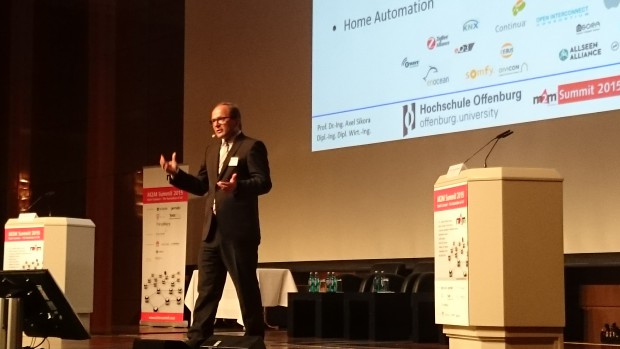
Indeed, Professor Sikora indicated there are more than 200 information & communications technology (ICT) standards bodies now trying to influence developments in machine-to-machine communications and to future-proof the Internet of Things. (A blog on this is being planned for publication here on M2MNow.biz).
Henry Ford famously said that if he’d asked customers what they wanted before he developed the Ford Model T they’d probably have said, ‘A faster horse’. Geniuses, then, may be able to predict what’s next, but the rest of us need to be guided by standards.
Unified Architecture was at the heart of the discussion led by Stefan Hoppe of OPC. He’s right; in industry, packaging, transport, materials handling are all disciplines that must be able to talk to each other. And yet they require widely differing skills.
Unified Architecture, or OPC UA as it’s known, already seems to have strong German government support where it is described as, “The one and only,” architecture for the communication layer.
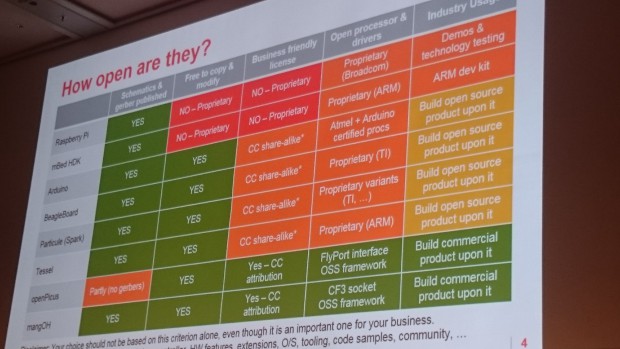
This should be listed among the progress that M2M can report in 2015. Progress was also announced by Thibault Cantegrel (pictured above), director of the Developer Programme at Sierra Wireless with its mangOH open-source hardware initiative. (M2MNow.biz will also publish a blog on this is in the next few days).
Fraunhofer Focus’s Dr Adel Al-Hezmi zeroed in on vertical industry interaction, just as Stefan Hoppe had. He picked out parking, traffic control, environmental protection and health. Al-Hezmi was, however, looking at it from the viewpoint of data integration, often in real time. Dr Al-Hezmi identified continuing challenges in M2M and IoT in legacy software and hardware, coverage, installation, security, and cost.
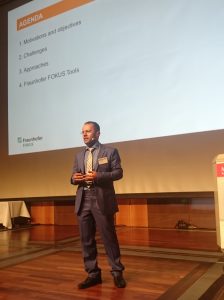
It was left to Qualcomm’s Hamid-Reza Nazeman, responsible in Germany for R&D investment, to talk about connectivity being at the heart of their strategy as well as Qualcomm’s research and development. Current investments include short-range, local area and wide area connectivity.
It’s still true that automotive dominates the company’s R&D. We are told, however, that we can expect other areas of Qualcomm investment to hit the headlines before the end of the year – in wearables, advanced drones and smart homes.
In Part 2: Read our Exclusive Report on Day Two of M2M Summit 2015, including discussion of consumer IoT applications, wearables, automotive, utilities, smart cities and Industry 4.0.
You can comment on this article below
or via Twitter (#M2MSummit15):
@m2mnow OR @jcm2m
